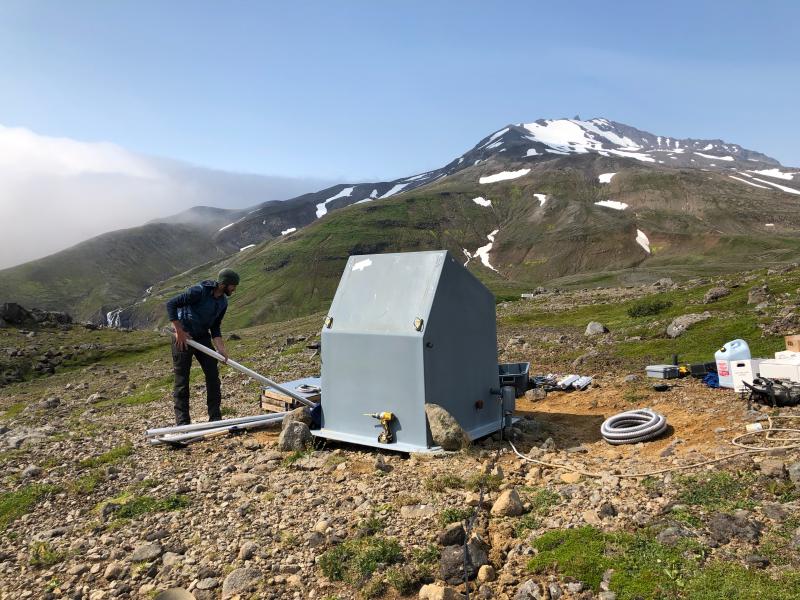The Alaska Volcano Observatory’s summer 2020 field work plans
Starting the summer of 2019, the Alaska Volcano Observatory (AVO) began a three-year initiative to upgrade our volcano-monitoring network, by converting remaining analog seismic stations and telemetry to digital technology. Because of the remote locations of many of the stations, AVO, through our cooperative agreement with the Alaska Division of Geological and Geophysical Surveys (ADGGS), contracted a 108-ft-long research vessels R/V Steadfast, which has a helipad, and plentiful storage, lab, and berthing space for AVO crews to perform the necessary work. A contracted helicopter works from this moving platform to transport crews and equipment from the vessel to each site that is to be upgraded.In 2019, upgrades were completed successfully at 45 stations and focused on networks around Adak (Gareloi, Tanaga, Kanaga, and Great Sitkin) and on Atka Island. In 2020, we planned for another ambitious season, including upgrades to our most remote networks in the western Aleutians, as well as a major upgrade to our satellite receive facility on Amchikta Island. In addition to upgrades, routine maintenance of equipment must proceed so that the entire monitoring network remains operational. 2020 field work was planned to start in late April at data-receive facilities, with vessel-based work slated to start in late May.
In light of COVID-19, we had to make changes to the scheduled work, due to timing, logistical constraints, and our desire to protect crews and the remote communities in the Aleutian island chain. We have postponed the far western Aleutians work, hoping to accomplish it in 2021. Our new vessel-based field schedule has work starting in mid-July and will focus on maintenance and upgrades in Cook Inlet, on the Alaska Peninsula, Unimak Island, and as far west as Dutch Harbor and possibly Umnak Island (home to frequently active Okmok volcano). The schedule has been reconfigured to minimize community interactions, and we developed a risk mitigation plan for the work following guidance from USGS, State of Alaska, and other organizations performing similar work (e.g., the University-National Oceanographic Laboratory System, or UNOLS, consortium). This change to our schedule drops the total number of vessel days from 88 to 54, and the planned number of analog-to-digital upgrades from 24 to 13. We also have helicopter-based geologic field investigations that are tentatively scheduled to proceed in August or September in the Cook Inlet and Wrangell areas.
